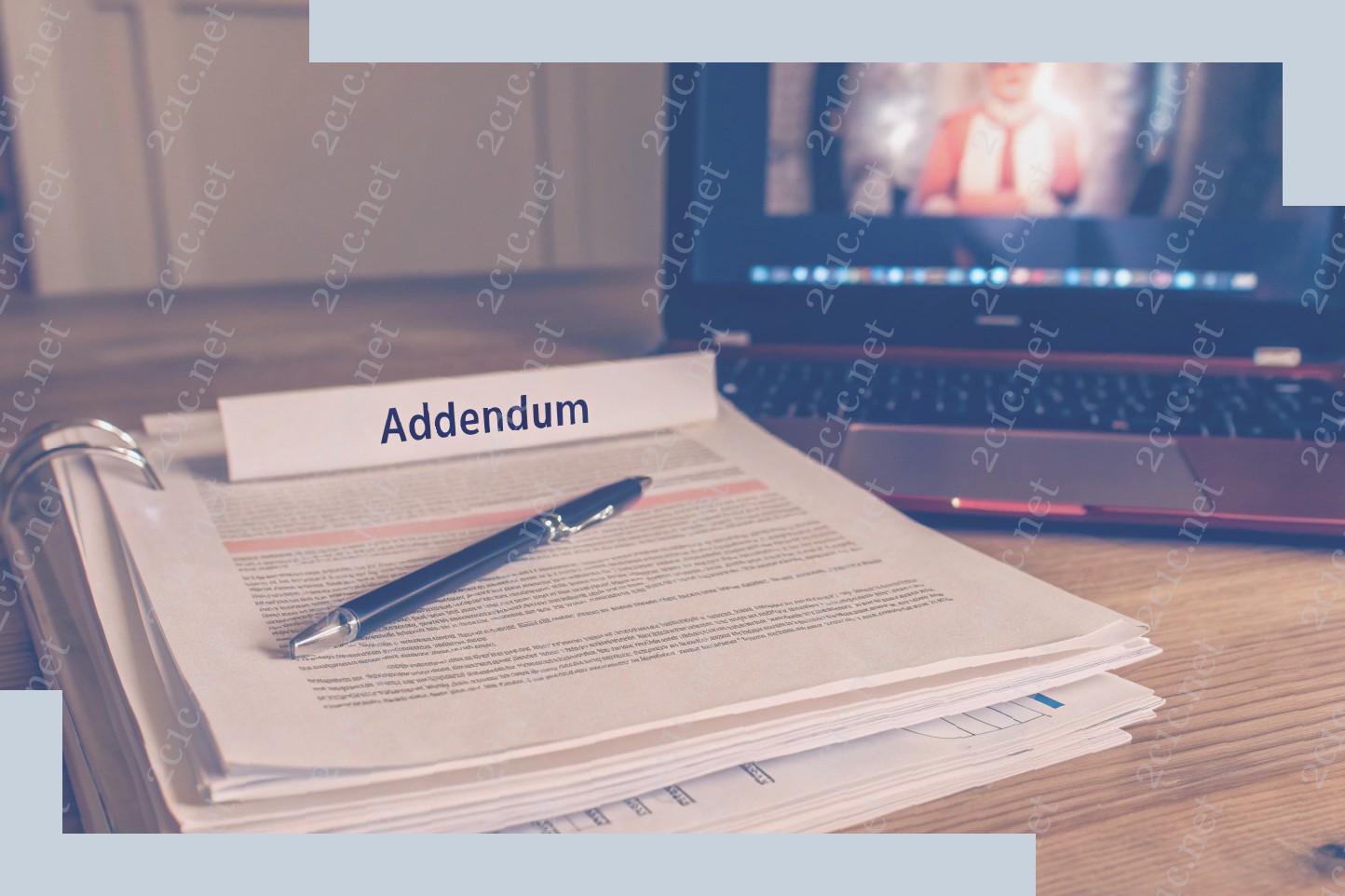Understanding Contract Addendums
A contract addendum is, in simpler terms, a change to an existing contract that is added to the end of it. It is a process that has been commonly used in every type of contract, both private and for business. This document is important because it provides the means to modify everything from payment date to how part of a contract is to be carried out. It can even change the entire course and scope of the document. One of the most important reasons why an addendum is needed is because of how difficult it can be to rewrite an entire contract. This is especially true in business contracts where editing a multi-page long document can be extremely time-consuming and laborious , prolonging the time it takes to fulfill obligations. By adding an addendum then instead, the process is sped up and allows both parties to better carry out the process. It also ensures that paperwork is not lost or rewritten incorrectly. Are there any other instances where this document can be used? Yes. An addendum can also be used where a contract has been partially or fully fulfilled.

When to Use an Addendum
Typically, the best time to consider an addendum is when both parties experience a common understanding of the need for contract modification. This means the change is not one-sided, and there is general agreement on the necessary amendments, thus avoiding the situation from escalating into a more formal, difficult dispute. Many contract disputes can be resolved with an addendum, provided the change will not be harmful to either party. Examples of changes that typically necessitate an addendum include:
- Language clarifications, especially for terms that are not well-defined within the original contract;
- Changes to payment or remuneration schedules for milestones already achieved;
- Changes to the quality standards for goods and products, based on current markets;
- Any changes to dates, deadlines, or time limits set by the original contract;
- Any changes to delivery dates or shipping schedules; and
- Changes to warranties, guarantees, indemnity protections, or other assurances that are already available through the contract.
Legal Requirements for a Contract Addendum
The law does not typically require an addendum to meet any specific requirements. However, at a minimum, parties should ensure that any proposed changes to a contract are agreed to by both parties and properly signed. If the original contract is required to be in writing to be legally enforceable, then getting the addendum in writing is essential as well.
As a practical matter, it is best to have changes to a written contract made by a written addendum signed by the parties. Although a verbal agreement or a side letter could be legally binding in some circumstances, problems may arise if there is a dispute. If a party denies that it agreed to the changes, it may be difficult to prove that the agreement was made in the first place.
In addition to the requirements of the Statute of Frauds described above, parties should review their contracts for any requirements that changes must be made in writing and signed twice (i.e. a "counterpart" or "conformed" copy) for their validity.
How to Write an Addendum
When drafting an addendum, start by referencing the original contract by name and date in order to make it clear what documents are being modified. Use plain language and avoid legal jargon in order to ensure everything can be understood with minimal effort. Before starting the addendum, read the entire contract carefully to determine the exact wording of the provisions you want to update. Be sure to make specific references to the provision numbers on the contract. For example, a vague statement such as "Article 3," or "in the second section after the title" is not specific enough to be reliably understood, and should be avoided. You could even copy the text from the contract into the addendum, provided that you specify exactly what section is being "copied" so as to avoid any confusion. When drafting, you have several options for how to present the added or modified text. You might, for example, use italics or a different font to identify the modified text . Alternatively, you could strike out the original provision and replace it with the new text. Be consistent with your presentation throughout the addendum, and avoid mixing formats within the same provision. Consistency is just as important when using external reference materials. If your contract states, for example, "the buyer will pay $1,000 as a nonrefundable deposit," you cannot later add a provision stating "the buyer agrees to pay $1,200 as a nonrefundable deposit." That would be a clear contradiction that could cause problems down the line. Finally, the authors of an addendum must make sure to properly identify themselves, by name and role, at the very end of the document. This is often in the form "agree to my signature below" followed by a space for the person’s signature and a short statement about their role in the transaction, such as "buyer" or "agent." If the person signing is an agent, then he or she should also sign again in the following sentence, as the principal for whom he or she is acting, if applicable.
Review & Approval Process
Prior to executing the Addendum, describe the process of how you would review the addendum carefully. For example, you could describe carefully checking for typos and where you cross reference the original article and reconcile any identified inconsistencies. It is also important that prior to execution of the Addendum, the agreement is sent to all parties to the contract, and they are asked to sign and return the addendum. In addition, it important to for the reviewer to consult with a legal professional about the revisions in the addendum if legal advice can be obtained.
Finalizing and Signing Your Addendum
Finalization and Signing of the Addendum
Once you have reviewed the proposed addendum with both parties to a contract and made any necessary revisions, you can call for an in-person or virtual meeting to finalize the addendum. This step may not be needed if the changes are not substantial and all that is required is an email exchange. However, if changes to the original agreement are significant enough to merit either a call or a meeting, this step should not be skipped.
For an in-person meeting, schedule a time that is convenient for all necessary parties. An attorney can facilitate the meeting if one party is not comfortable meeting the other party without a representative. Prepare copies of the new contract with the proposed addendum for each party present at the meeting. Sign the final copy of the addendum with all parties present. Leave a space for each party to initial the addendum to indicate they have reviewed the document and agree with the proposed changes.
For a virtual meeting , schedule a date and time that works for parties and send calendar invites. Send each party an electronic copy of the proposed contract with the addendum attached. Ask them to login and initial the addendum once they have read the contract. You can also ask them to briefly mention on camera during the meeting that they reviewed the contract and were able to initial the addendum for their records. Sign the contract using your digital signature, then send it to the other parties letting them know it is now complete and ready for their review.
Regardless of the method in which you meet with the parties to finalize the contract addendum, whether in person or virtually, it is important to save the signed contract with the addendum in a safe place where all parties who need it will have access to it going forward. Be sure to attach the addendum to the original contract prior to finalization for future reference. Keep the original signed document for your own reference as well.
When drafting a contract addendum, it is important to follow the proper steps to ensure that it is a legally binding contract between parties. Getting help from an experienced attorney may help ensure that everything is in place for final review.
